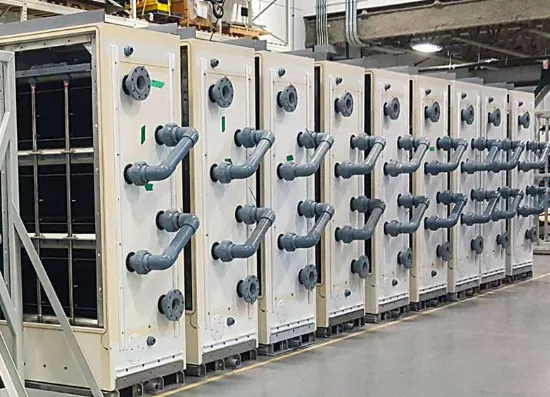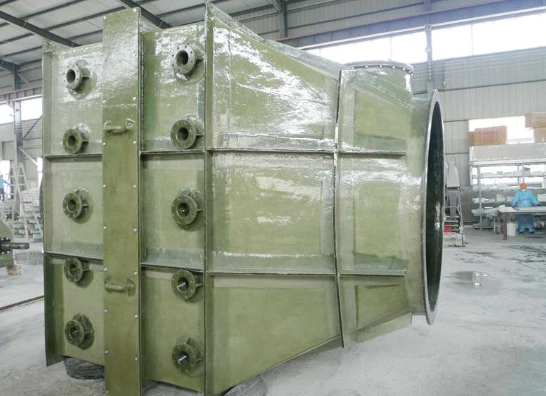
-
 Afrikaans
Afrikaans -
 Albanian
Albanian -
 Amharic
Amharic -
 Arabic
Arabic -
 Armenian
Armenian -
 Azerbaijani
Azerbaijani -
 Basque
Basque -
 Belarusian
Belarusian -
 Bengali
Bengali -
 Bosnian
Bosnian -
 Bulgarian
Bulgarian -
 Catalan
Catalan -
 Cebuano
Cebuano -
 China
China -
 China (Taiwan)
China (Taiwan) -
 Corsican
Corsican -
 Croatian
Croatian -
 Czech
Czech -
 Danish
Danish -
 Dutch
Dutch -
 English
English -
 Esperanto
Esperanto -
 Estonian
Estonian -
 Finnish
Finnish -
 French
French -
 Frisian
Frisian -
 Galician
Galician -
 Georgian
Georgian -
 German
German -
 Greek
Greek -
 Gujarati
Gujarati -
 Haitian Creole
Haitian Creole -
 hausa
hausa -
 hawaiian
hawaiian -
 Hebrew
Hebrew -
 Hindi
Hindi -
 Miao
Miao -
 Hungarian
Hungarian -
 Icelandic
Icelandic -
 igbo
igbo -
 Indonesian
Indonesian -
 irish
irish -
 Italian
Italian -
 Japanese
Japanese -
 Javanese
Javanese -
 Kannada
Kannada -
 kazakh
kazakh -
 Khmer
Khmer -
 Rwandese
Rwandese -
 Korean
Korean -
 Kurdish
Kurdish -
 Kyrgyz
Kyrgyz -
 Lao
Lao -
 Latin
Latin -
 Latvian
Latvian -
 Lithuanian
Lithuanian -
 Luxembourgish
Luxembourgish -
 Macedonian
Macedonian -
 Malgashi
Malgashi -
 Malay
Malay -
 Malayalam
Malayalam -
 Maltese
Maltese -
 Maori
Maori -
 Marathi
Marathi -
 Mongolian
Mongolian -
 Myanmar
Myanmar -
 Nepali
Nepali -
 Norwegian
Norwegian -
 Norwegian
Norwegian -
 Occitan
Occitan -
 Pashto
Pashto -
 Persian
Persian -
 Polish
Polish -
 Portuguese
Portuguese -
 Punjabi
Punjabi -
 Romanian
Romanian -
 Russian
Russian -
 Samoan
Samoan -
 Scottish Gaelic
Scottish Gaelic -
 Serbian
Serbian -
 Sesotho
Sesotho -
 Shona
Shona -
 Sindhi
Sindhi -
 Sinhala
Sinhala -
 Slovak
Slovak -
 Slovenian
Slovenian -
 Somali
Somali -
 Spanish
Spanish -
 Sundanese
Sundanese -
 Swahili
Swahili -
 Swedish
Swedish -
 Tagalog
Tagalog -
 Tajik
Tajik -
 Tamil
Tamil -
 Tatar
Tatar -
 Telugu
Telugu -
 Thai
Thai -
 Turkish
Turkish -
 Turkmen
Turkmen -
 Ukrainian
Ukrainian -
 Urdu
Urdu -
 Uighur
Uighur -
 Uzbek
Uzbek -
 Vietnamese
Vietnamese -
 Welsh
Welsh -
 Bantu
Bantu -
 Yiddish
Yiddish -
 Yoruba
Yoruba -
 Zulu
Zulu
Fiberglass Storage Tanks Durable & Corrosion-Resistant FRP Solutions
- Fundamental Principles of Fiberglass Storage Technology
- Material Advantages Over Traditional Tank Options
- Comparative Analysis of Leading Industry Manufacturers
- Performance Metrics and Industry Certification Benchmarks
- Tailored Engineering Solutions for Specific Applications
- Practical Implementation Across Industrial Sectors
- Future Developments in FRP Tank Engineering

(fiberglass storage tank)
Why Fiberglass Storage Tanks Dominate Industrial Applications
Modern facilities increasingly utilize FRP storage tanks for critical containment operations where chemical resistance proves essential. These composite vessels represent significant advancements from metallic predecessors, with non-corrosive properties fundamentally changing material handling economics. Industry adoption has grown 17% annually since 2018 according to Global Market Insights, reflecting operational cost reductions of 30-45% in corrosive environments. The inherent design flexibility allows configurations from 50-gallon auxiliary units to 50,000-gallon primary storage installations without compromising structural integrity.
Material Advantages Over Traditional Tank Options
Superior corrosion resistance defines the fiberglass storage tank
value proposition. Where carbon steel tanks degrade within 3-5 years when handling 20% sulfuric acid, FRP alternatives maintain structural stability for 25+ years according to ASME testing protocols. This longevity stems from the thermosetting polymer matrix that resists chemical permeation at molecular level. Unlike polyethylene tanks that become brittle at -20°F, FRP maintains impact resistance down to -60°F. Installation cost comparisons reveal 40% savings versus rubber-lined steel vessels, primarily from eliminating cathodic protection systems.
Comparative Analysis of Leading Industry Manufacturers
| Manufacturer | Max Diameter | Pressure Rating | Certifications | Customization |
|---|---|---|---|---|
| Lionheart | 28 ft | 15 PSI | ASME RTP-1, NSF-61 | Multi-compartment |
| Containment Solutions | 32 ft | 10 PSI | UL-142, FDA | Heated jackets |
| ZCL Composites | 40 ft | 5 PSI | AWWA D120, CE | Internal baffles |
| Denali | 24 ft | 25 PSI | ASME, EN 13121 | Mixer integration |
The manufacturing landscape features distinct specialization patterns. Top-rated producers generally differentiate through pressure handling capabilities and chemical compatibility matrices rather than pure volumetric capacity. Third-party validation remains critical, with UL-1316 certification now considered minimum due diligence for hydrochloric acid storage applications. Leading suppliers offer proprietary resin formulations with validated performance data across 300+ chemicals.
Performance Metrics and Industry Certification Benchmarks
Mechanical properties undergo rigorous validation per ASTM D3681 standards. Typical FRP constructions achieve tensile strength exceeding 30,000 psi - nearly triple polyethylene alternatives. Permeation tests reveal near-zero chemical migration even with aggressive solvents like bromine. Industry certifications create quantifiable safety parameters:
- ASME RTP-1 compliance requires full vacuum rating at operating temperatures
- NSF-61 approval demands 18-month material immersion testing
- API 650 appendix nine validates seismic performance
Leak detection systems have become integral, with double-wall constructions offering secondary containment exceeding EPA 40 CFR requirements by 150% capacity.
Tailored Engineering Solutions for Specific Applications
Customization constitutes the true advantage of fiberglass tanks over standardized containment options. Temperature-controlled systems incorporate:
- Insulation layers maintaining ±2°F variance in freezing environments
- Electric heating blankets rated for Class I, Division 1 areas
- Cone-bottom designs achieving 99.7% material evacuation
For sulfuric acid storage, multi-layer constructions including veil barriers prevent microscopic crystallization. Pharmaceutical installations increasingly specify FDA-compliant gel coats that withstand CIP sterilization cycles. Recent innovations include seamless integrally-bonded fittings eliminating potential leak paths.
Practical Implementation Across Industrial Sectors
Mining operations demonstrate exceptional ROI with FRP acid storage tanks handling leach solutions. A Chilean copper mine documented $1.2M savings over seven years by replacing rubber-lined steel tanks experiencing 18-month failure cycles. Water treatment facilities standardize NSF-certified tanks for chlorine storage after concrete containment structures showed deterioration within 24 months. Petroleum sector adoption continues growing with epoxy vinyl ester tanks resisting naphthenic acids that degrade carbon steel in 14 months.
Securing Infrastructure with Advanced FRP Technology
Continuous material innovations progressively expand fiberglass storage tank capabilities. Recent developments include:
- Nano-enhanced resins showing 75% improved abrasion resistance
- Smart monitoring systems detecting wall thickness variations
- Hybrid carbon fiber reinforcements for earthquake zones
These advancements transform FRP acid storage tanks from passive containers into integrated process assets. Manufacturing trends indicate impending integration of self-diagnostic sensors meeting Industry 4.0 protocols. The current ASTM F1545 revision cycle promises updated testing methodologies reflecting twenty-first century chemical handling requirements.

(fiberglass storage tank)
FAQS on fiberglass storage tank
Q: What is a fiberglass storage tank used for?
A: A fiberglass storage tank is designed to store corrosive or hazardous liquids like acids, chemicals, or wastewater. Its corrosion-resistant properties make it ideal for industrial, agricultural, and municipal applications. FRP construction ensures durability in harsh environments.
Q: How does an FRP storage tank differ from a traditional steel tank?
A: FRP (fiberglass-reinforced plastic) storage tanks are lighter, non-corrosive, and require less maintenance than steel tanks. They resist rust, chemicals, and UV degradation, making them suitable for acidic or alkaline substances. Steel tanks, however, may need coatings for similar resistance.
Q: Can fiberglass storage tanks handle concentrated acids?
A: Yes, fiberglass tanks are engineered to store concentrated acids like hydrochloric, sulfuric, or nitric acid. The resin-rich inner layer provides chemical resistance, while structural layers ensure strength. Always verify compatibility with the specific acid and tank specifications.
Q: What temperature ranges can an FRP acid storage tank withstand?
A: Most FRP acid storage tanks operate between -40°F to 180°F (-40°C to 82°C). Extreme temperatures may require specialized resins or coatings. Always consult the manufacturer for temperature limits based on the stored chemical and tank design.
Q: How long does a fiberglass storage tank typically last?
A: With proper maintenance, fiberglass tanks can last 20-30+ years. Lifespan depends on exposure to chemicals, UV radiation, and physical stress. Regular inspections and avoiding overfills or impacts help maximize longevity.
Latest news
-
Durable Rectangular Fiberglass Tanks Corrosion-ResistantNewsJun.04,2025
-
GRP Rectangular Water Tanks Durable Custom Dimensions for StorageNewsJun.04,2025
-
Premium Fiberglass Storage Tanks Durable & Corrosion-ResistantNewsJun.04,2025
-
Durable Fiberglass Fuel Tank - Corrosion-Resistant & SafeNewsJun.04,2025
-
Premium FRP Dual Lamination Products High Strength & Corrosion ResistantNewsJun.04,2025
-
Durable FRP Stair Treads Slip-Resistant & Corrosion ProofNewsJun.04,2025









